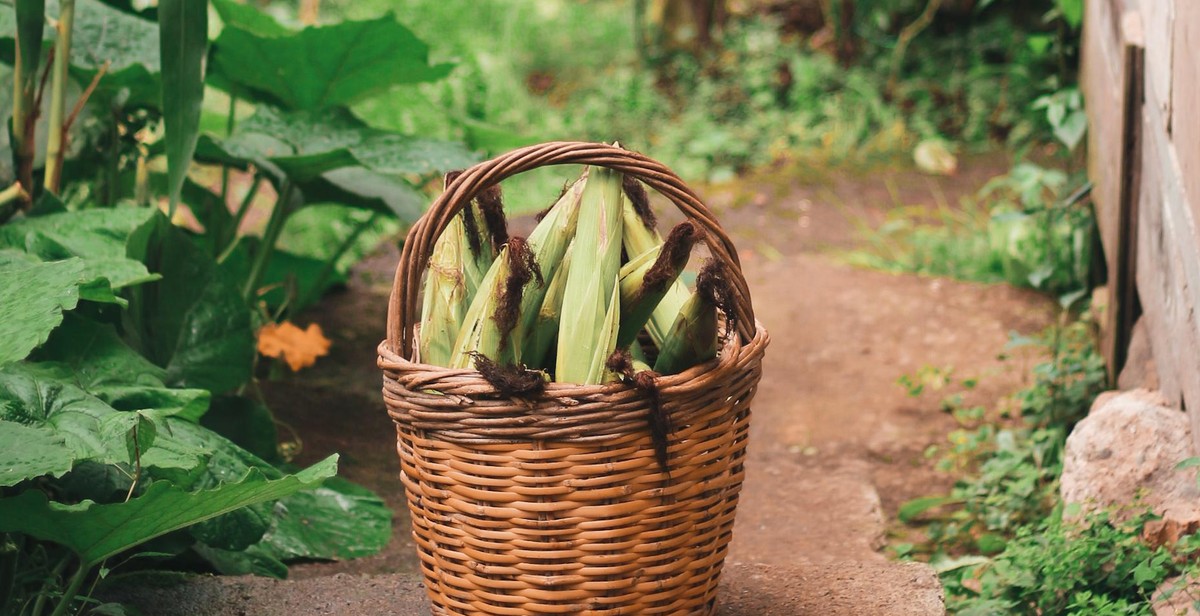How to Design a Vertical Vegetable Garden for Small Spaces
Are you looking to grow your own vegetables but don’t have much space in your backyard? A vertical vegetable garden could be the perfect solution for you. Not only does it save space, but it also adds a unique and aesthetically pleasing element to your outdoor space.
Why Design a Vertical Vegetable Garden for Small Spaces?
Vertical vegetable gardens are a great way to maximize space in a small backyard or balcony. They allow you to grow a variety of vegetables and herbs in a compact area, making it easier to manage and maintain. Additionally, vertical gardens can add a beautiful and unique element to your outdoor space, turning a bland wall or fence into a vibrant and colorful garden.
Factors to Consider Before Designing a Vertical Vegetable Garden
Before you start designing your vertical vegetable garden, there are a few factors you should consider:
- Location: Choose a spot that gets plenty of sunlight and is easily accessible for watering and maintenance.
- Size: Determine how much space you have to work with and choose a design that fits within those limitations.
- Materials: Decide on the materials you want to use for your vertical garden, such as wood, metal, or plastic.
- Watering: Consider how you will water your plants, whether it be through a drip irrigation system or by hand.
- Plant Selection: Choose plants that are well-suited for vertical gardening, such as tomatoes, cucumbers, and herbs.
By taking these factors into account, you can design a vertical vegetable garden that is both functional and visually appealing.

Designing Your Vertical Vegetable Garden
Vertical vegetable gardening is a popular technique used by many gardeners to maximize their space and yield. It involves growing plants upward instead of outward, making it perfect for small spaces. However, designing a vertical vegetable garden requires careful planning and consideration to ensure it is successful. Here are some tips on how to design your vertical vegetable garden:
Choosing the Right Plants for Vertical Gardening
When choosing plants for your vertical garden, it is important to consider their growth habits. Plants that naturally climb or have a vining habit are ideal for vertical gardening. Some popular choices include tomatoes, cucumbers, peas, beans, and squash. You can also consider using herbs and leafy greens, such as basil, lettuce, and spinach, which do not require as much space to grow.
It is also important to consider the size and weight of the plants you choose. Make sure your vertical structure can support the weight of the plants and their fruits.
Structures for Vertical Vegetable Gardens
There are many structures you can use for your vertical vegetable garden, including trellises, stakes, cages, and walls. The type of structure you choose will depend on the plants you are growing and the space available.
Trellises are ideal for vining plants and can be made from bamboo, metal, or wood. Stakes can be used for individual plants, such as tomatoes, and can be made from bamboo or metal. Cages are also great for tomatoes and can be made from wire mesh. Walls can be used to grow plants vertically and can be made from pallets or other recycled materials.
Preparing the Soil and Planting
Before planting, it is important to prepare the soil. Make sure it is well-draining and has enough nutrients for your plants. You can add compost or fertilizer to the soil to improve its quality.
When planting, make sure to space your plants according to their needs. Some plants, such as tomatoes, require more space than others. You can also consider interplanting, which involves planting different crops together in the same space to maximize your yield.
Water your plants regularly and make sure they receive enough sunlight. Prune them as needed to encourage growth and prevent overcrowding.
| Pros | Cons |
|---|---|
| Maximizes space | Requires careful planning and consideration |
| Can increase yield | May require additional support structures |
| Can be visually appealing | May require more frequent watering |
Overall, designing a vertical vegetable garden is a great way to make the most of your space and increase your yield. By choosing the right plants, structures, and soil, you can create a successful and productive garden.

Maintaining Your Vertical Vegetable Garden
Maintaining your vertical vegetable garden is crucial to ensure a healthy and fruitful harvest. Here are some tips on how to keep your garden in top shape:
Watering and Feeding
Watering and feeding your plants are essential for their growth and productivity. Vertical gardens tend to dry out faster than traditional gardens, so it’s important to keep the soil moist. Water your plants daily, especially during hot and dry weather. Use a watering can or a drip irrigation system to deliver water directly to the roots.
Fertilize your plants regularly to provide them with the necessary nutrients. You can use organic fertilizers such as compost or manure. Alternatively, you can use commercial fertilizers specifically designed for vegetable gardens. Follow the instructions on the package carefully and avoid over-fertilizing, which can damage your plants.
Pest Control
Pests can be a major problem in vegetable gardens, especially in small spaces where plants are closer together. Keep an eye out for common pests such as aphids, spider mites, and whiteflies. Inspect your plants regularly and remove any damaged or infected leaves or fruits.
You can use natural remedies to control pests, such as neem oil or insecticidal soap. These products are safe for humans and pets and won’t harm beneficial insects such as bees and ladybugs. Alternatively, you can use commercial pesticides, but be careful to choose products that are safe for edible plants and follow the instructions on the package.
Harvesting Your Vertical Vegetable Garden
Harvesting your vegetables is the most rewarding part of gardening. Most vegetables are ready to harvest when they reach their mature size and color. For example, tomatoes should be picked when they are fully ripe and red. Harvest your vegetables regularly to encourage more growth and prevent overcrowding.
Use sharp scissors or pruning shears to cut your vegetables from the stem. Be careful not to damage the plant or the surrounding leaves. Wash your vegetables thoroughly before eating or storing them. Some vegetables, such as tomatoes and peppers, can be stored at room temperature, while others, such as lettuce and spinach, should be refrigerated.
| Vegetable | Harvesting Time |
|---|---|
| Tomatoes | When fully ripe and red |
| Peppers | When fully grown and colored |
| Lettuce | When leaves are large enough to eat |
| Spinach | When leaves are fully grown and tender |
By following these tips, you can maintain a healthy and productive vertical vegetable garden in your small space. With a little effort and attention, you can enjoy a bountiful harvest of fresh and delicious vegetables.

Conclusion
Vertical vegetable gardening is an excellent solution for those who want to grow their own produce but have limited space. It allows you to maximize the use of your available space while still producing a bountiful harvest. By following the steps outlined in this guide, you can create your own vertical vegetable garden and enjoy fresh, healthy produce all year round.
Benefits of Vertical Vegetable Gardening in Small Spaces
- Maximizes space utilization
- Reduces the need for bending and kneeling
- Prevents soil-borne diseases
- Easy to maintain and harvest
- Improves air circulation and sunlight exposure
- Enhances the aesthetics of your space
Tips for Successful Vertical Vegetable Gardening
To ensure a successful harvest, follow these tips:
- Choose the right plants for your environment.
- Ensure your vertical garden receives adequate sunlight.
- Use quality soil and fertilizer.
- Water your plants regularly.
- Prune and train your plants to encourage growth.
- Keep an eye out for pests and diseases and take appropriate action.
Start Your Vertical Vegetable Garden Today
With the benefits and tips outlined in this guide, you can create a successful vertical vegetable garden in a small space. Not only will you enjoy fresh, healthy produce, but you’ll also enhance the aesthetics of your space and create a more sustainable lifestyle. So, what are you waiting for? Start your vertical vegetable garden today!
